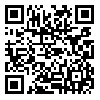BibTeX | RIS | EndNote | Medlars | ProCite | Reference Manager | RefWorks
Send citation to:
URL: http://qhts.modares.ac.ir/article-10-36707-en.html
2- Assistant Professor of Quran studies of university of Quran and Hadith shahr-e-rey (Tehran)
3- Msc Political Science of Islamic Azad University of Tehran, Teacher of Hebrew language
One of the most important challenges in the process of translating the Quran into other languages is the observation of grammatical rules and conveying it into the aim language correctly. «Tazmin» is one of these rules. The application of this rule in the Qur’anic verses has always been controversial. This research, using a descriptive-analytical method, criticizes how the Hebrew translators encountered with the rule of «Tazmin» in Qur’an. The correct translation of «Tazmin» cases is of high importance because it sometimes affects our understanding of the juristic, theological and aesthetic dimensions of the Quranic verses. One of the results of the survey is that the Hebrew translators of the Quran have hardly been successful in grasping and conveying «Tazmin» in their translations. Although Muslim translators have been more successful in this field, they also have in many cases failed in true understanding and translating it, hence making impressions contrary to the principles of the Shariah. The errors of the Hebrew translators are mainly due to their ignorance of the people’s culture at the era of Quran’s revelation and their inability to properly transmit «Tazmin».
Received: 2019/09/22 | Accepted: 2019/09/22 | Published: 2019/09/22
| Rights and permissions | |
 |
This work is licensed under a Creative Commons Attribution-NonCommercial 4.0 International License. |









